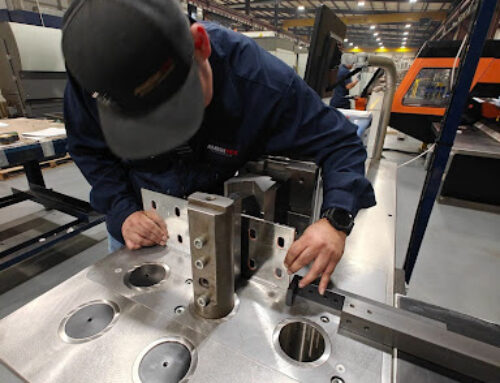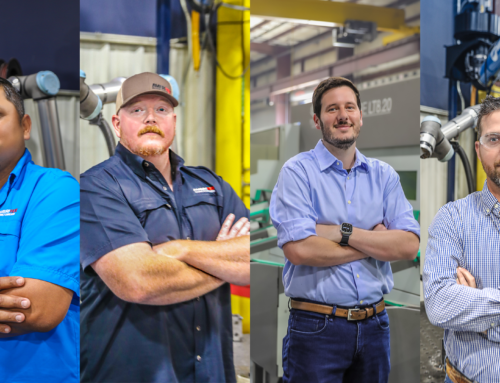Are rising commodities prices impacting your business?
As you’re already well aware, the cost of metal is astronomically high right now due to increasing demand and tight supply. Suppliers that slowed capacity during the COVID-19 pandemic are struggling to meet the needs of a restarting economy.
But pandemic-related challenges aren’t the only factors affecting the cost of metal. Geopolitical policies like import tariffs on steel and aluminum are also driving material prices up.
There’s a perfect storm of unfavorable market dynamics—and unfortunately, there’s no sign of prices going down anytime soon.
If paying 2-3 times the price you’re used to for a sheet or tube of steel isn’t working for you, Ameritex has some simple tips to help minimize the impact of high material costs.
3 Ways to Minimize the Impact of High Material Costs
1. Identify opportunities to use less material.
You may be overlooking opportunities to decrease the thickness of the raw material used for your custom fabrications.
When it comes to structural steel, designers tend to rely on default dimensions for tubing. It’s easier for them to stick with what they’ve used before, and they may not even think to use a different size. That logic is fine when ¼” thick wall tubing is $.30 per pound. But when the same tubing costs over $1 per pound, a thinner wall tube is a much more economical option.
Don’t worry, using a thinner wall tube won’t always compromise the strength of your part. Intelligently engineered designs may allow you to accomplish the goal while meeting the required design specification. Try things like increasing profile sizes (the structural shapes going into the tube) or adding members in specific locations to improve rigidity. In many cases, increasing the profile size alone makes a part even stronger than using a thicker wall tube.
You can also make flat sheet metal parts sturdier without adding weight by using flanges, supports, or stiffeners. So don’t be afraid to use a thinner piece of flat sheet metal either.

2. Stick with readily available materials and sizes.
Supply is varying significantly right now depending on factors like material and size. Extra-wide materials, like flat sheets of metal measuring more than 5 feet wide, are scarce. So suppliers are charging a premium for those sizes. The same thing is happening with pre-grained stainless steel. Non-grained stainless steel is considerably cheaper at the moment because it’s much easier to find.
So, what should you do? Our best advice is to keep your materials and sizes as standard as possible. Now is not the time to pick the rarest material in your toolbox for your part!
Reach out to us about your custom fabrications before submitting a quote to see if we can readily source your desired material. If we can’t get it for a price that works for you, we’ll recommend an alternative material that’s easier to source.
3. Explore different material options.
If you’ve been wanting to use aluminum for your custom fabrications, but the material price has been prohibitively high in the past, it’s time to give it another look.
Why? Because aluminum prices haven’t increased as much as steel prices. Currently, you can get aluminum for a price comparable to what you’d pay for steel.
The big advantage of using aluminum is that, unlike with stainless steel, it can stay uncoated without being prone to rusting. That means you can get the same corrosion-resistant properties for your aluminum fabrication without the added finishing operations required for carbon steel materials. You get your part faster. . . and potentially even cheaper!
We’re all hoping to see the commodities market level out again as soon as possible. But in the meantime, Ameritex is here to help minimize the impact of high material costs and get you the parts you need. Contact us to discuss your material requirements before finalizing your design and submitting a quote!




